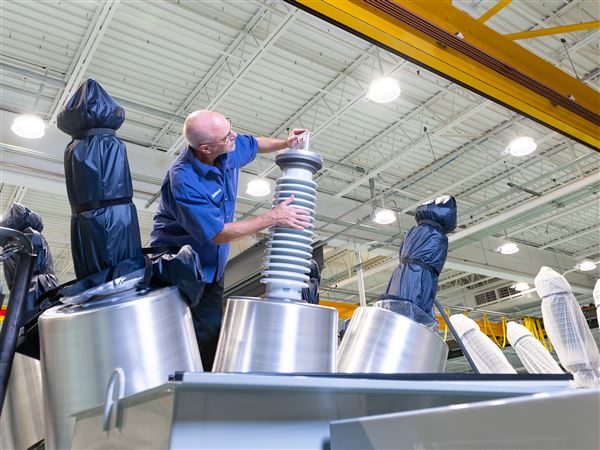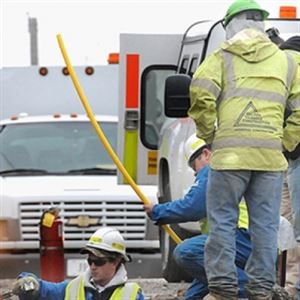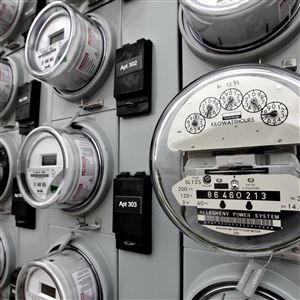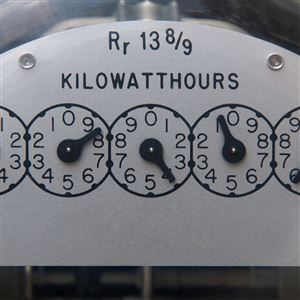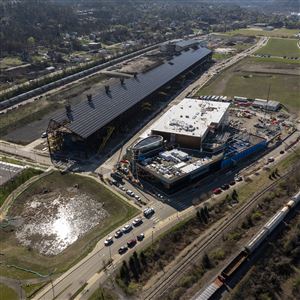Last week, Columbia Gas of Pennsylvania asked regulators for permission to raise residential rates by 14.5% next year.
The Canonsburg-based utility, a subsidiary of NiSource Inc. of Indiana, made the request just weeks after the Pennsylvania Public Utility Commission approved its last rate hike, amounting to a 9.9% increase.
This was not a surprise to Columbia’s investors and regulators. The company has made it clear it intends to file rate cases annually or as close to that as possible, and it has raised rates during seven of the past 10 years.
But its prior request, made a few weeks after the COVID-19 pandemic began, drew particularly impassioned opposition from consumer advocates, the business community and an administrative law judge, all of whom asked the fundamental question: What does it mean for a utility to balance the interests of consumers and investors during a global health and economic crisis?
If Columbia’s request is approved, an average residential customer would see rates increase from $100.77 to $115.37 a month. Small commercial clients would see a 13.6% increase, from a monthly average of $164.92 to $187.30. Small industrial customers’ bills would rise by 11.4%, from an average of $1,164.10 to $1,296.34.
The PUC typically approves a lower increase than what utilities ask for, after litigation that tends to last the better part of a year. The 9.9% increase in residential rates that the PUC approved in February was below the 17.8% hike that Columbia asked for last year.
If the theme of the last rate case was a world turned upside down by COVID-19, the current effort is likely to draw on the same material.
Columbia Gas says it needs $98.3 million in additional revenue to carry out its ambitious pipeline replacement program in order to maintain safe service to its 438,000 customers across 26 Pennsylvania counties, including all the ones in southwestern Pennsylvania.
That money would cover the cost of the work and give its investors what the utility considers a “fair rate of return” — about 10.95%.
Without this additional revenue, the investors would get a return of around 5%, which Columbia says could potentially drive them to other industries or other states, jeopardizing the capital needed to serve consumers.
The counterpoints — and there were many — had a central theme, too. This is not a “business as usual” time.
“What may have been a ‘just and reasonable’ rate earlier this year may be unreasonable today,” said Scott Rubin, a consultant who spoke on behalf of the Office of Consumer Advocate during last year’s rate case.
The social contract between a utility, its customers, investors and regulators, is about balance. Where that balance ends up on any particular year depends on the circumstances, Mr. Rubin said.
“Columbia’s customers would be absolutely thrilled if they could pay all their bills (including various increases in expenses that may or may not occur next year), make all of their debt payments, and still have enough left over to earn a profit on their equity investment,” he said. “Most businesses would find that result absolutely amazing at this time. When compared to the economic devastation gripping its service territory, I cannot find anything just or reasonable about increasing Columbia’s rates at this time.”
Columbia, Mr. Rubin said, appears to have decided that its shareholders should sacrifice nothing during the pandemic, while its consumers bear the brunt of the pandemic’s devastation.
The utility filed for its last rate increase in April 2020, just a few weeks after the pandemic began to wash over the world. Its future projections were all based on pre-pandemic data and assumptions. The company asked for $100.4 million, or 17.56% more a year. It was the largest increase request in the last decade.
After a series of hearings, the administrative law judge presiding over the case recommended that the PUC deny Columbia’s request, saying it ran counter to the public interest.
In February, the PUC approved a revenue increase of $63.5 million, or 11.1%. Its investors will get a return of 9.8%.
In a letter accompanying their votes for the rate hike, PUC Chairman Gladys Brown Dutrieuille and Vice Chairman David Sweet expressed “our disappointment that Columbia failed to propose any temporary pandemic relief within this proceeding” and called on it to measure the success of its outreach to low-income consumers by the results, not the effort.
Russell Bedell, director of communications at Columbia Gas, said the current rate case addresses some of these concerns.
“We are not charging late fees for residential customers, and we are offering expanded payment plans to residential and commercial customers,” he said.
“We applied for and received approval from the PUC to expand eligibility for our Hardship Fund to help more customers who would not traditionally meet the income guidelines,” Mr. Bedell said. He encouraged customers to contact the utility if they need help paying their bills and said Columbia welcomes active involvement from consumers in its rate cases.
Business is down, but utility use hasn’t changed
While utilities and regulators in Pennsylvania have focused on helping struggling residents by expanding customer assistance programs, no such aid is available for commercial and industrial customers. Small businesses, like Randall’s Restaurant in Perryopolis, can’t apply to have parts of their bill lowered because they are losing their income.
That’s what prompted Randall’s co-owner Greg Berkebile to testify at last year’s rate case against the proposed increase. His business, which has been in the family for half a century, saw its sales drop by 70% during the pandemic, he said last summer, while its utility consumption didn’t change at all.
Under the now enacted 13% rate hike, Mr. Berkebile’s restaurant will owe an extra $1,500 a year to the utility. The new proposed increase — another 13.6% — would push that even higher.
While some loyal customers have returned to the restaurant over the past several months and it might take only a year or two for it to fully recover, Mr. Berkebile was baffled that as Pennsylvania has seen the price of natural gas plummet due to its bountiful shale reserves, his restaurant’s bill has increased year after year.
That’s because the cost of the fuel is a much smaller component of a utility’s rate than the cost to distribute it.
Those low gas prices actually make it an opportune time to invest more money in pipeline replacement, Columbia’s CEO Mark Kempic wrote in testimony for the current rate case. That portion of the bill will offset rising distribution costs, he reasoned.
Plus, pipeline construction creates jobs and investment in local communities, the utility argued — it is exactly the kind of infrastructure spending that politicians and economists have advocated for in times of economic distress.
The utility projected that this year it will have about 145 construction crews with about 1,450 contractor employees and subcontractors.
The effort to rehab the utility’s infrastructure began 14 years ago and the company has replaced more than 1,150 miles of cast iron and bare steel pipe — the utility’s system has 7.7 million miles of pipe in total — which is at greatest risk for corrosion. As it gets to the end of that task, Columbia is starting to replace first generation plastic pipelines, laid before 1982, and steel coated pipes installed before 1971.
Numerous witnesses suggested that Columbia postpone some projects and delay its rate case until the aftermath of the pandemic comes into sharper relief. But the utility countered that the longer it postpones the hikes, the bigger those rate increases will eventually become.
The current rate case is now before the PUC, which will likely launch an investigation into Columbia’s request in the near future. At that point, consumers and other stakeholders can comment on the proposal.
Anya Litvak: alitvak@post-gazette.com
First Published: April 7, 2021, 10:00 a.m.
Updated: April 7, 2021, 12:33 p.m.






